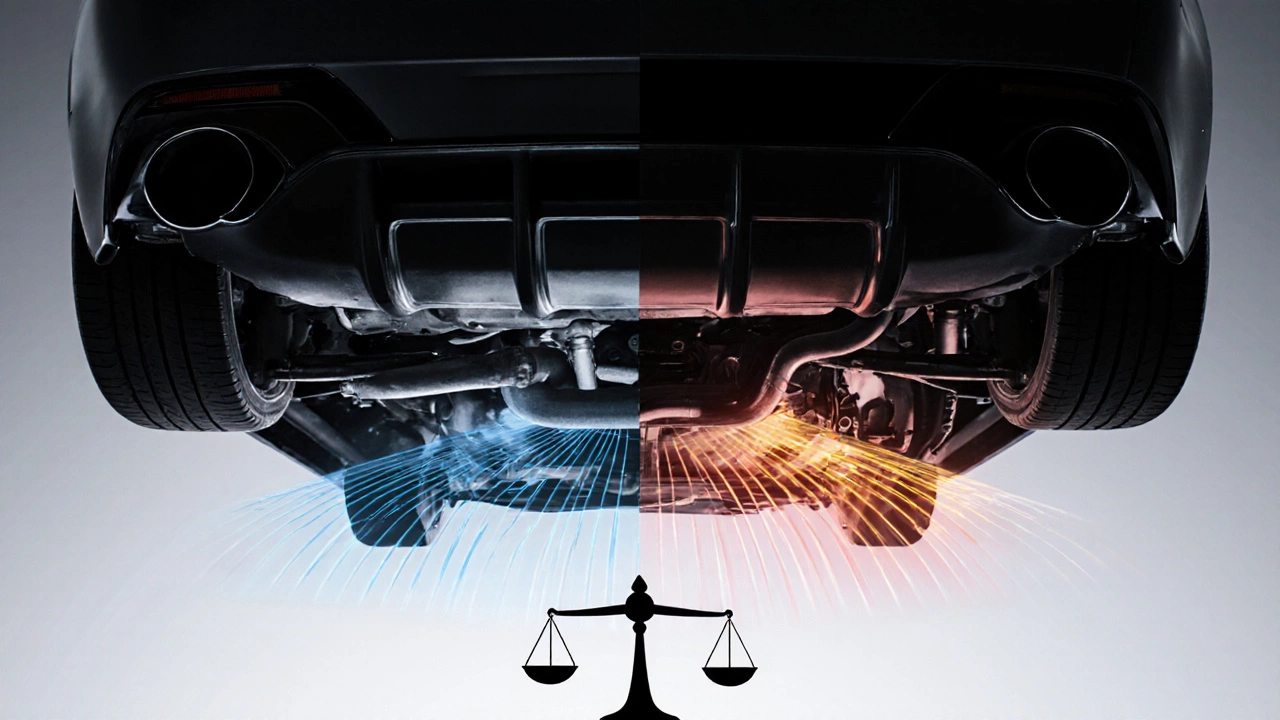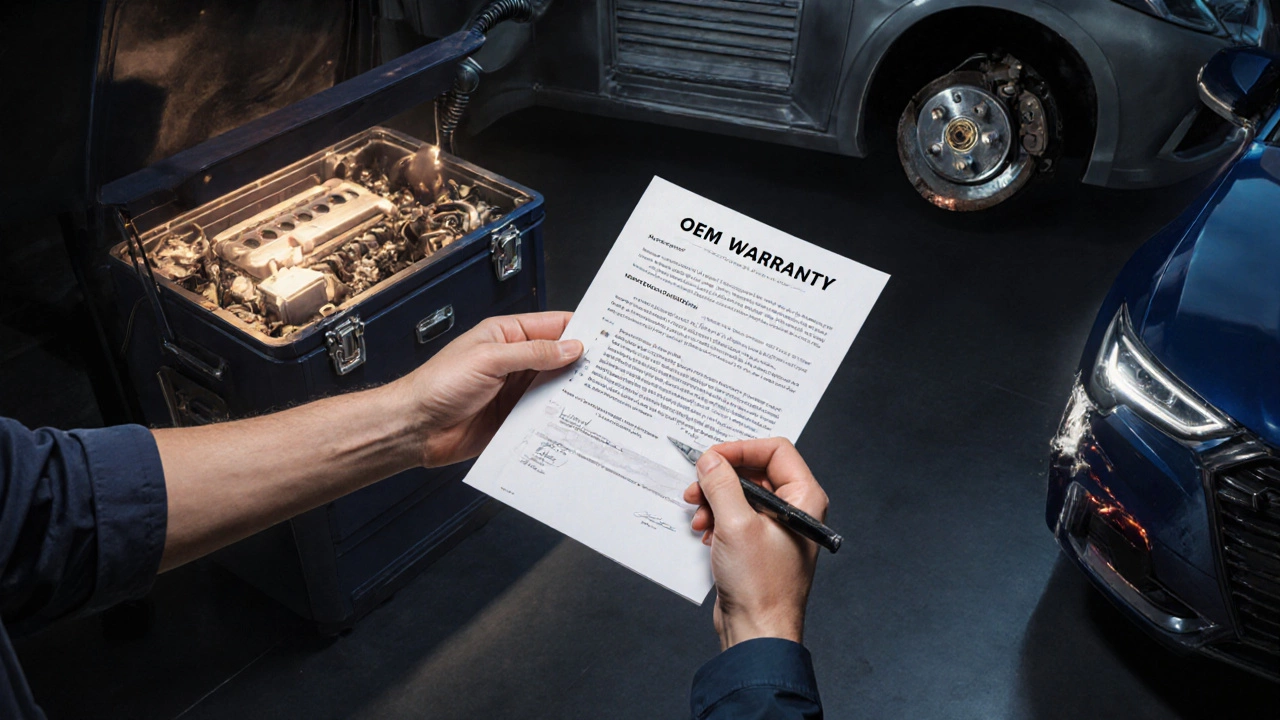Warranty Impact Calculator
Check Your Warranty Risk
Answer these questions about your vehicle modifications to see which warranty components might be affected.
Warranty Impact Assessment
Affected Components
Recommended Action
If you’ve spent money on a new car with a bumper to bumper warranty, you want to protect it. But here’s the truth: adding a body kit, upgrading your wheels, or installing aftermarket parts doesn’t automatically kill your warranty. But it can-and many people don’t realize how until it’s too late.
In Australia, the law protects you. The Australian Consumer Law says a manufacturer can’t void your entire warranty just because you added an aftermarket part. But they can deny coverage for any damage that they prove was caused by that part. That’s the key difference.
What Exactly Is a Bumper to Bumper Warranty?
A bumper to bumper warranty covers nearly every part of your car from the front bumper to the back bumper. This includes things like the engine, transmission, air conditioning, infotainment system, electrical components, and even some interior trim. It’s the most comprehensive coverage you get when you buy a new car. Most manufacturers offer this for 3 to 5 years or 60,000 to 100,000 kilometers-whichever comes first.
But this warranty doesn’t cover wear and tear. It doesn’t cover damage from accidents, neglect, or modifications that cause a failure. And that’s where body kits and aftermarket parts come in.
Body Kits and Warranty: The Real Risk
Installing a body kit-like a front lip, side skirts, or rear diffuser-is one of the most common ways people modify their cars. They look great. But if that body kit isn’t properly installed, or if it interferes with airflow, sensors, or cooling systems, the manufacturer can deny warranty claims related to those areas.
For example: a poorly fitted rear diffuser might block airflow to the rear brakes, causing them to overheat. If your brake calipers fail after 2 years, the dealer can argue the body kit caused the overheating-and refuse to cover the repair. They don’t need to prove you broke the law. They just need to show a reasonable link between the modification and the failure.
Same goes for front lips that sit too low. If it scrapes the road and cracks the oil pan or damages the radiator, that’s not covered. The warranty doesn’t protect you from bad installation or poor-quality parts.
What Else Can Void Your Warranty?
Body kits aren’t the only risk. Here’s what actually triggers warranty denials:
- Engine tuning or ECU remaps - Changing the factory engine software to boost power can cause overheating, turbo failure, or transmission stress. If your engine blows after a tune, the dealer will likely deny the claim.
- Aftermarket exhaust systems - If the exhaust rubs against the chassis or changes backpressure so much that it damages the catalytic converter or engine management system, those repairs won’t be covered.
- Non-OEM wheels or tires - If you install wheels that are too large or too wide, they can stress the suspension, wheel bearings, or even the ABS sensors. A failed wheel bearing after 18 months? The dealer might say it’s because you used 20-inch wheels instead of the factory 18-inch ones.
- Improper fluid changes - Using the wrong oil, coolant, or transmission fluid can cause internal damage. If you use cheap synthetic oil not approved by the manufacturer, and your engine seizes, they can refuse to cover it.
- Off-road driving or racing - If you regularly take your car off-road or track it, even if it’s not a performance model, the warranty can be voided for suspension, drivetrain, or chassis damage.
Here’s the thing: manufacturers don’t have to prove you intentionally damaged the car. They only need to show the modification contributed to the failure. And they have the right to inspect your car before approving any claim.

How to Install Mods Without Killing Your Warranty
You don’t have to give up your dream car to keep your warranty. Here’s how to do it right:
- Use OEM-approved parts - Many manufacturers now sell their own body kits, spoilers, and wheels. These are designed to work with the car’s systems and won’t void your warranty. For example, Toyota’s TRD parts or Ford’s Performance accessories are covered under warranty.
- Get professional installation - A mechanic who knows your car’s wiring, sensors, and alignment specs can install parts without causing hidden damage. DIY installations are the #1 cause of warranty disputes.
- Keep all receipts and records - If you ever need to make a warranty claim, you’ll need proof that parts were installed correctly and that maintenance was done on time. Save every invoice.
- Don’t tamper with factory software - Avoid ECU tuning unless it’s done by the manufacturer or an approved tuner. Even then, some warranties explicitly ban it.
- Stick to factory specs for wheels and tires - If the factory recommends 205/55 R16, don’t go to 225/45 R18 unless the manufacturer approves it.
One real example from Melbourne: a customer installed a cheap carbon fiber body kit on his new Subaru WRX. Three months later, the engine light came on. The dealer found that the front lip had shifted and was blocking the radiator intake. The engine overheated, warping the head gasket. The warranty claim was denied-not because of the body kit itself, but because of poor installation and lack of clearance checks.
What the Law Actually Says (Australia)
Under the Australian Consumer Law, manufacturers can’t refuse warranty service just because you modified your car. But they can refuse to fix damage that was directly caused by the modification. This is a legal gray area many dealers exploit.
Here’s what you can do if they refuse:
- Ask them to show you exactly how the modification caused the failure. They must provide evidence-not just a guess.
- Request a written explanation. If they won’t give it, contact the ACCC (Australian Competition and Consumer Commission).
- Get an independent mechanic’s report. If they say the failure was unrelated to the modification, you have leverage.
There’s a reason why dealerships are hesitant to deny claims outright: the ACCC has fined manufacturers for wrongful warranty denials. You have rights. But you need to know how to use them.

What’s Covered After You Modify?
Even if you install a body kit, your warranty doesn’t disappear entirely. Only the affected parts lose coverage. For example:
- If your body kit causes a radiator leak, the radiator repair might be denied-but your infotainment system is still covered.
- If your ECU tune causes transmission failure, the transmission is out-but your power windows still work under warranty.
This is called “partial warranty.” The manufacturer can’t void the whole thing. Only the damage they can prove was caused by your modification.
Final Advice: Think Before You Modify
Modifying your car is fun. But it’s not free. Every change you make carries risk. If you plan to keep your car for the full warranty period, stick to factory-approved parts. If you want to go wild, consider waiting until the warranty expires-or budget for potential repairs.
And if you’re unsure? Ask your dealer before you buy. Say: ‘If I install this part, will it affect my warranty?’ Get their answer in writing. If they say ‘no,’ ask for a signed note. That’s your protection.
Warranty isn’t about being perfect. It’s about being smart. You don’t have to give up style. But you do have to understand the trade-offs.
Can a body kit void my entire warranty?
No, a body kit cannot void your entire warranty. Under Australian law, manufacturers can only deny coverage for damage directly caused by the modification. Other parts of your car-like the engine, transmission, or electronics-remain covered unless proven to be affected.
Do I need to tell my dealer about modifications?
You’re not legally required to tell your dealer. But if you ever need warranty service, they will inspect your car. If they find modifications and suspect they caused a failure, they can deny the claim. Keeping records and using professional installers reduces risk.
What if I buy parts online from overseas?
Parts bought overseas often don’t meet Australian safety or emissions standards. Even if they fit, manufacturers can refuse warranty claims if they believe the part caused damage. Stick to parts designed for your specific model and region.
Can I install a body kit myself and still keep the warranty?
Yes, but it’s risky. DIY installations are more likely to cause hidden damage-like misaligned sensors, broken wiring, or improper clearance. If a problem arises, the dealer will assume the installation caused it. Professional installation gives you better protection.
How do I prove a failure wasn’t caused by my modification?
Get a written report from an independent, accredited mechanic. If they confirm the failure was due to a manufacturing defect or normal wear-not your modification-you can use this to challenge the dealer’s decision. Keep all service records and photos of your car before and after modifications.
Next Steps for Car Owners
If you’re thinking about modifying your car:
- Check your warranty document. Look for the section on modifications.
- Call your dealership and ask which parts are approved.
- Wait until after the warranty expires if you want to make big changes.
- Always use quality parts and professional installers.
- Keep every receipt and invoice-even for small parts.
Modifications are part of car culture. But they’re not a game. The warranty is your safety net. Don’t cut the strings unless you’re ready to pay for the fall.




